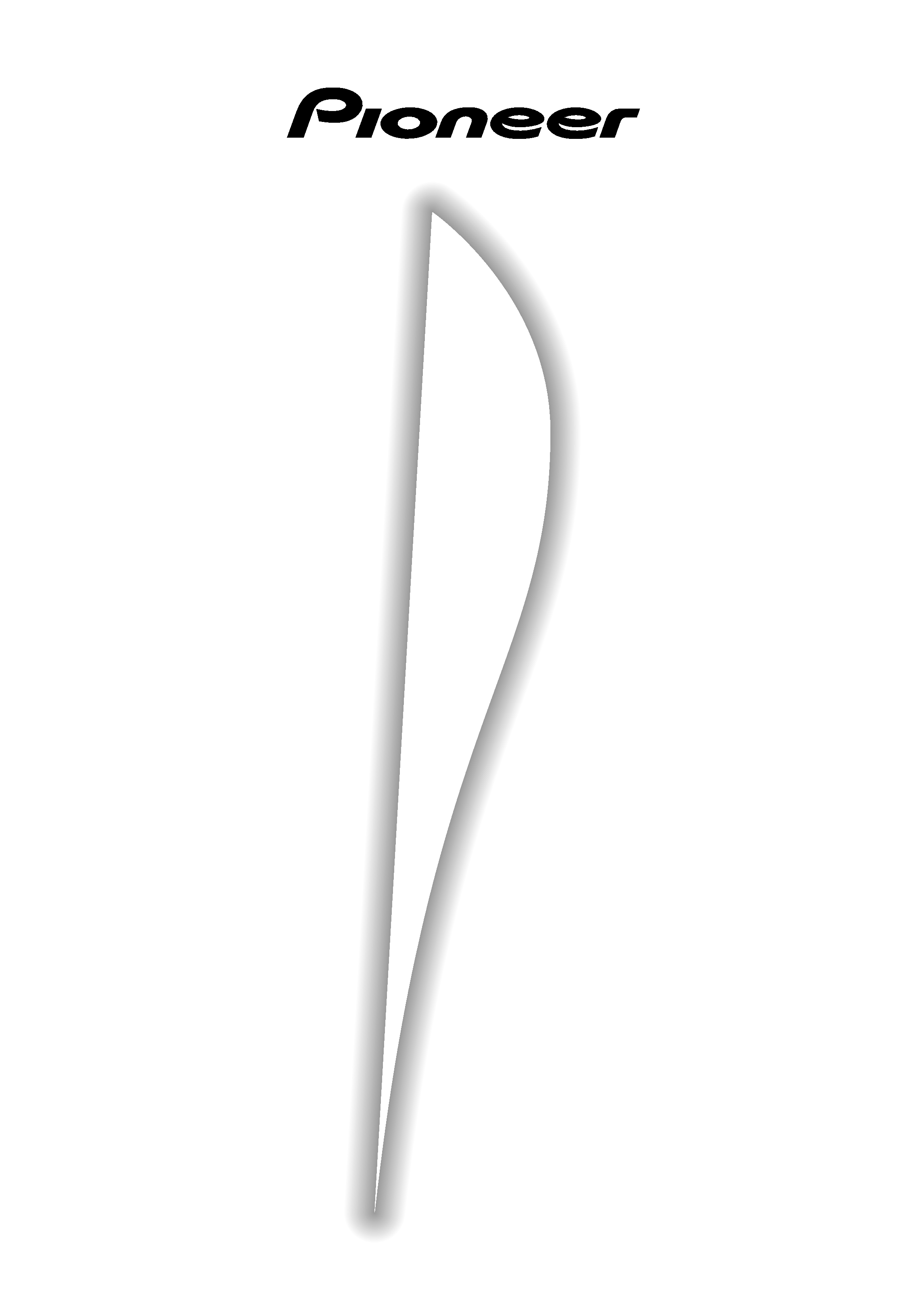
Operating Instructions
STEREO DOUBLE CASSETTE DECK
CT-W208R
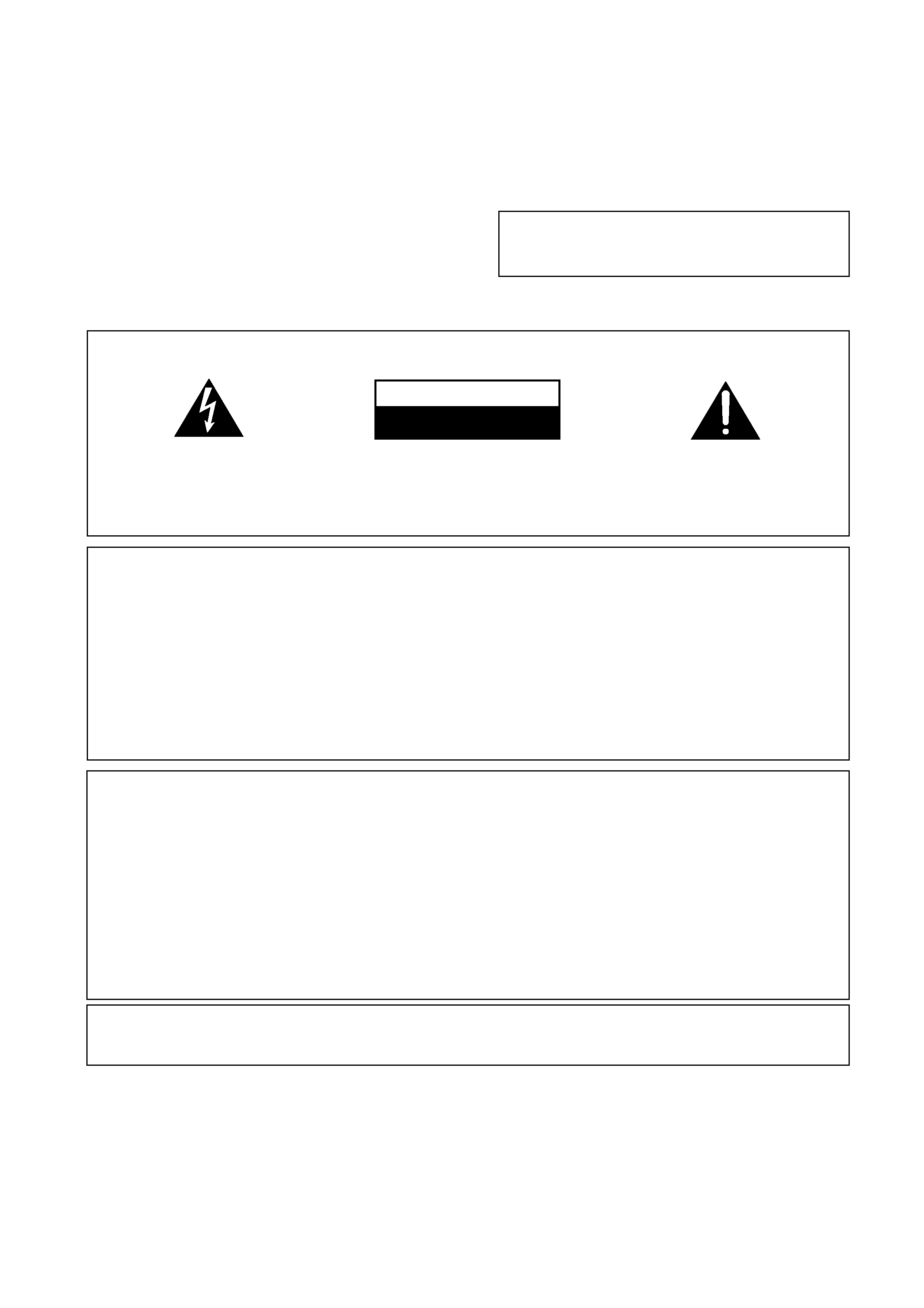
2
Thank you for buying this Pioneer product.
Please read through these operating instructions so you
will know how to operate your unit properly. After you
have finished reading the instructions, keep them in a
safe place for future reference.
In some countries or regions, the shape of the power
plug and power outlet may sometimes differ from that
shown in the explanatory drawings. However, the
method of connecting and operating the unit is the
same.
WARNING:TO PREVENT FIRE OR SHOCK HAZ-
ARD, DO NOT EXPOSE THIS APPLIANCE TO RAIN OR
MOISTURE.
This product complies with the Low Voltage
Directive (73/23/EEC), EMC Directives (89/336/EEC,
92/31/EEC) and CE Marking Directive (93/68/EEC).
RISK OF ELECTRIC SHOCK
DO NOT OPEN
CAUTION
IMPORTANT
The lightning flash with arrowhead symbol,
within an equilateral triangle, is intended to alert
the user to the presence of uninsulated "dan-
gerous voltage" within the product's enclosure
that may be of sufficient magnitude to consti-
tute a risk of electric shock to persons.
CAUTION:
TO PREVENT THE RISK OF ELECTRIC
SHOCK, DO NOT REMOVE COVER (OR
BACK). NO USER-SERVICEABLE PARTS IN-
SIDE. REFER SERVICING TO QUALIFIED
SERVICE PERSONNEL.
The exclamation point within an equilateral
triangle is intended to alert the user to the
presence of important operating and
maintenance (servicing) instructions in the
literature accompanying the appliance.
This equipment has been tested and found to comply with the limits for a Class B digital device, pursuant to
Part 15 of the FCC Rules. These limits are designed to provide reasonable protection against harmful
interference in a residential installation. This equipment generates, uses, and can radiate radio frequency
energy and, if not installed and used in accordance with the instructions, may cause harmful interference to
radio communications. However, there is no guarantee that interference will not occur in a particular
installation. If this equipment does cause harmful interference to radio or television reception, which can be
determined by turning the equipment off and on, the user is encouraged to try to correct the interference by
one or more of the following measures:
Reorient or relocate the receiving antenna.
Increase the separation between the equipment and receiver.
Connect the equipment into an outlet on a circuit different from that to which the receiver is connected.
Consult the dealer or an experienced radio/TV technician for help.
Information to User
Alteration or modifications carried out without appropriate authorization may invalidate the user's right to
operate the equipment.
IMPORTANT
FOR USE IN THE UNITED
KINGDOM
The wires in this mains lead are coloured in
accordance with the following code :
Blue
: Neutral
Brown
: Live
If the plug provided is unsuitable for your socket
outlets, the plug must be cut off and a suitable
plug fitted.
Do not connect either wire to the earth terminal
of a three pin plug.
NOTE
After replacing or changing a fuse, the fuse cover
in the plug must be replaced with a fuse cover
which corresponds to the colour of the insert in
the base of the plug or the word that is em-
bossed on the base of the plug, and the appli-
ance must not be used without a fuse cover. If
lost replacement fuse covers can be obtained
from: your dealer.
Only 5 A fuses approved by B.S.I. or A.S.T.A to
B.S. 1362 should be used.
The cut-off plug should be disposed of and must
not be inserted into any 13 amp socket as this can
result in electric shock. The plug or adaptor or the
distribution panel should be provided with 5 amp
fuse. As the colours of the wires in the mains lead
of this appliance may not correspond with coloured
markings identifying the terminals in your plug, pro-
ceed as follows :
The wire which is coloured blue must be con-
nected to the terminal which is marked with the
letter N or coloured black.
The wire which is coloured brown must be con-
nected
to the terminal which is marked with the letter L or
coloured red.
IMPORTANT NOTICE
[For U.S. model]
The serial number for this equipment is located on
the rear panel. Please write this serial number on
your enclosed warranty card and keep it in a secure
area. This is for your security.
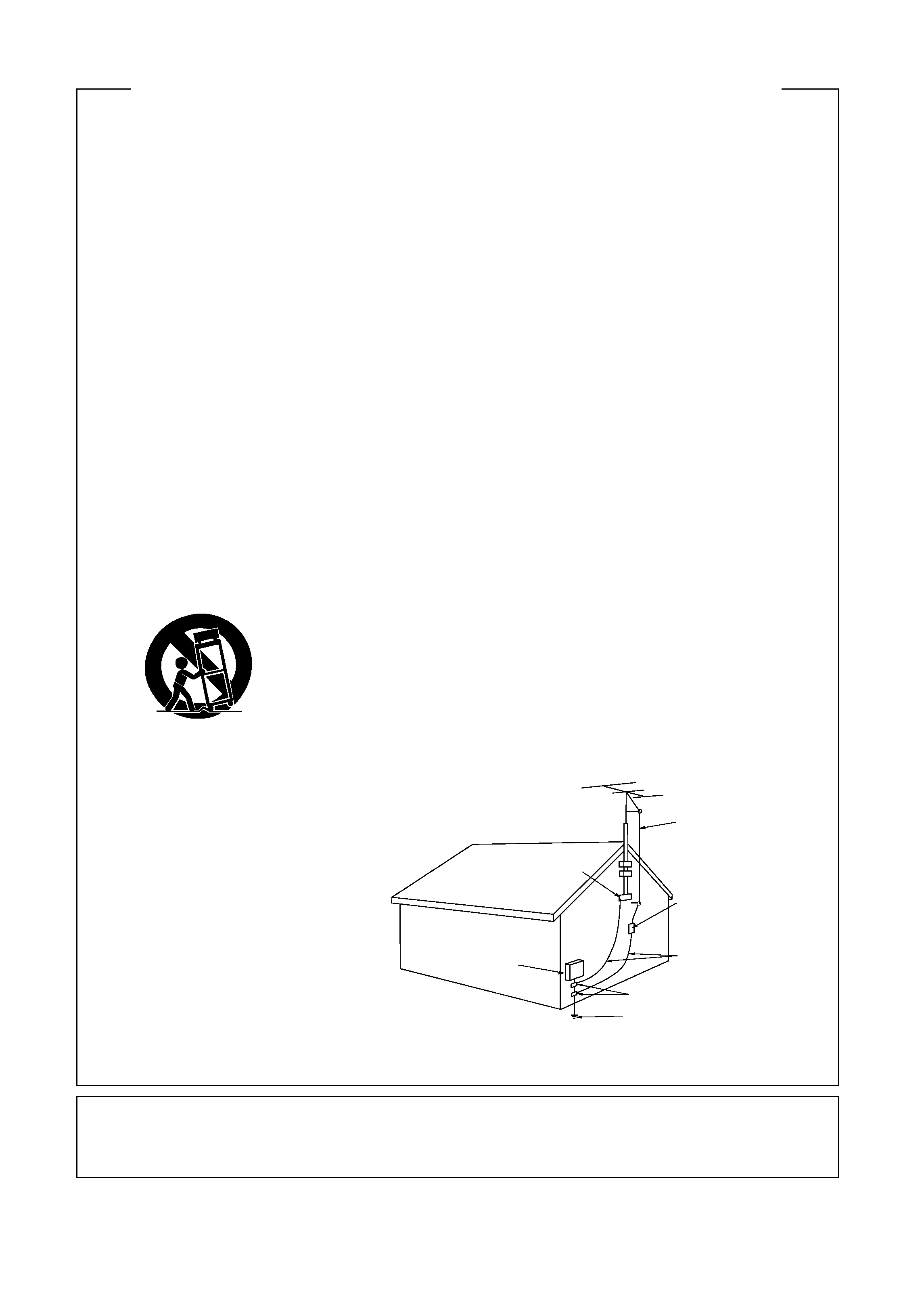
3
READ INSTRUCTIONS -- All the safety and
operating instructions should be read before
the product is operated.
RETAIN INSTRUCTIONS -- The safety and
operating instructions should be retained for
future reference.
HEED WARNINGS -- All warnings on the product
and in the operating instructions should be
adhered to.
FOLLOW INSTRUCTIONS -- All operating and use
instructions should be followed.
CLEANING -- Unplug this product from the wall
outlet before cleaning. The product should be
cleaned only with a polishing cloth or a soft dry
cloth. Never clean with furniture wax, benzine,
insecticides or other volatile liquids since they
may corrode the cabinet.
ATTACHMENTS -- Do not use attachments not
recommended by the product manufacturer as
they may cause hazards.
WATER AND MOISTURE -- Do not use this product
near water -- for example, near a bathtub,
wash bowl, kitchen sink, or laundry tub; in a wet
basement; or near a swimming pool; and the
like.
ACCESSORIES -- Do not place this product on an
unstable cart, stand, tripod, bracket, or table.
The product may fall, causing serious injury to
a child or adult, and serious damage to the
product. Use only with a cart, stand, tripod,
bracket, or table recommended by the
manufacturer, or sold with the product. Any
mounting of the product should follow the
manufacturer's instructions, and should use a
mounting accessory recommended by the
manufacturer.
CART -- A product and cart combination should be
moved with care. Quick stops, excessive force,
and uneven surfaces may cause the product
GROUNDING OR POLARIZATION
¶
If this product is equipped with a polarized
alternating current line plug (a plug having one
blade wider than the other), it will fit into the
outlet only one way. This is a safety feature. If
you are unable to insert the plug fully into the
outlet, try reversing the plug. If the plug should
still fail to fit, contact your electrician to replace
your obsolete outlet. Do not defeat the safety
purpose of the polarized plug.
¶
If this product is equipped with a three-wire
grounding type plug, a plug having a third
(grounding) pin, it will only fit into a grounding
type power outlet. This is a safety feature. If you
are unable to insert the plug into the outlet,
contact your electrician to replace your obsolete
outlet. Do not defeat the safety purpose of the
grounding type plug.
POWER-CORD PROTECTION -- Power-supply
cords should be routed so that they are not
likely to be walked on or pinched by items
placed upon or against them, paying particular
attention to cords at plugs, convenience
receptacles, and the point where they exit from
the product.
OUTDOOR ANTENNA GROUNDING -- If an
outside antenna or cable system is connected
to the product, be sure the antenna or cable
system is grounded so as to provide some
protection against voltage surges and built-up
static charges. Article 810 of the National
Electrical Code, ANSI/NFPA 70, provides
information with regard to proper grounding of
the mast and supporting structure, grounding
of the lead-in wire to an antenna discharge unit,
size of grounding conductors, location of
antenna-discharge unit, connection to grounding
electrodes, and requirements for the grounding
electrode. See Figure A.
LIGHTNING -- For added protection for this product
during a lightning storm, or when it is left
unattended and unused for long periods of
time, unplug it from the wall outlet and
disconnect the antenna or cable system. This
will prevent damage to the product due to
lightning and power-line surges.
POWER LINES -- An outside antenna system should
not be located in the vicinity of overhead power
lines or other electric light or power circuits, or
where it can fall into such power lines or circuits.
When installing an outside antenna system,
extreme care should be taken to keep from
touching such power lines or circuits as contact
with them might be fatal.
OVERLOADING -- Do not overload wall outlets,
extension cords, or integral convenience
receptacles as this can result in a risk of fire or
electric shock.
OBJECT AND LIQUID ENTRY -- Never push objects
of any kind into this product through openings
as they may touch dangerous voltage points or
short-out parts that could result in a fire or
electric shock. Never spill liquid of any kind on
the product.
SERVICING -- Do not attempt to service this product
yourself as opening or removing covers may
expose you to dangerous voltage or other
hazards. Refer all servicing to qualified service
personnel.
DAMAGE REQUIRING SERVICE -- Unplug this
product from the wall outlet and refer servicing
to qualified service personnel under the
following conditions:
¶
When the power-supply cord or plug is damaged.
¶
If liquid has been spilled, or objects have fallen
into the product.
¶
If the product has been exposed to rain or
water.
¶
If the product does not operate normally by
following the operating instructions. Adjust only
those controls that are covered by the operating
instructions as an improper adjustment of other
controls may result in damage and will often
require extensive work by a qualified technician
to restore the product to its normal operation.
¶
If the product has been dropped or damaged in
any way.
¶
When the product exhibits a distinct change in
performance -- this indicates a need for service.
REPLACEMENT PARTS -- When replacement parts
are required, be sure the service technician has
used replacement parts specified by the
manufacturer or have the same characteristics
as the original part. Unauthorized substitutions
may result in fire, electric shock, or other hazards.
SAFETY CHECK -- Upon completion of any service
or repairs to this product, ask the service
technician to perform safety checks to
determine that the product is in proper operating
condition.
WALL OR CEILING MOUNTING -- The product
should not be mounted to a wall or ceiling.
HEAT -- The product should be situated away from
heat sources such as radiators, heat registers,
stoves, or other products (including amplifiers)
that produce heat.
and cart combination to overturn.
VENTILATION -- Slots and openings in the cabinet
are provided for ventilation and to ensure reliable
operation of the product and to protect it from
overheating, and these openings must not be
blocked or covered. The openings should never
be blocked by placing the product on a bed,
sofa, rug, or other similar surface. This product
should not be placed in a built-in installation
such as a bookcase or rack unless proper
ventilation is provided or the manufacturer's
instructions have been adhered to.
POWER SOURCES -- This product should be
operated only from the type of power source
indicated on the marking label. If you are not
sure of the type of power supply to your home,
consult your product dealer or local power
company.
LOCATION The appliance should be installed in a
stable location.
NONUSE PERIODS The power cord of the
appliance should be unplugged from the outlet
when left un-used for a long period of time.
ANTENNA
LEAD IN
WIRE
ANTENNA
DISCHARGE UNIT
(NEC SECTION 810-20)
GROUNDING CONDUCTORS
(NEC SECTION 810-21)
GROUND CLAMPS
POWER SERVICE GROUNDING
ELECTRODE SYSTEM
(NEC ART 250, PART H)
ELECTRIC
SERVICE
EQUIPMENT
NEC -- NATIONAL ELECTRICAL CODE
Fig. A
GROUND
CLAMP
IMPORTANT SAFETY INSTRUCTIONS
CONDENSATION
When the unit is brought into a warm room from previously cold conditions or when the room temperature is
suddenly increased, condensation may form inside and the unit may not be able to attain its full performance.
To prevent this, allow the unit to stand for about an hour or raise the room temperature gradually.
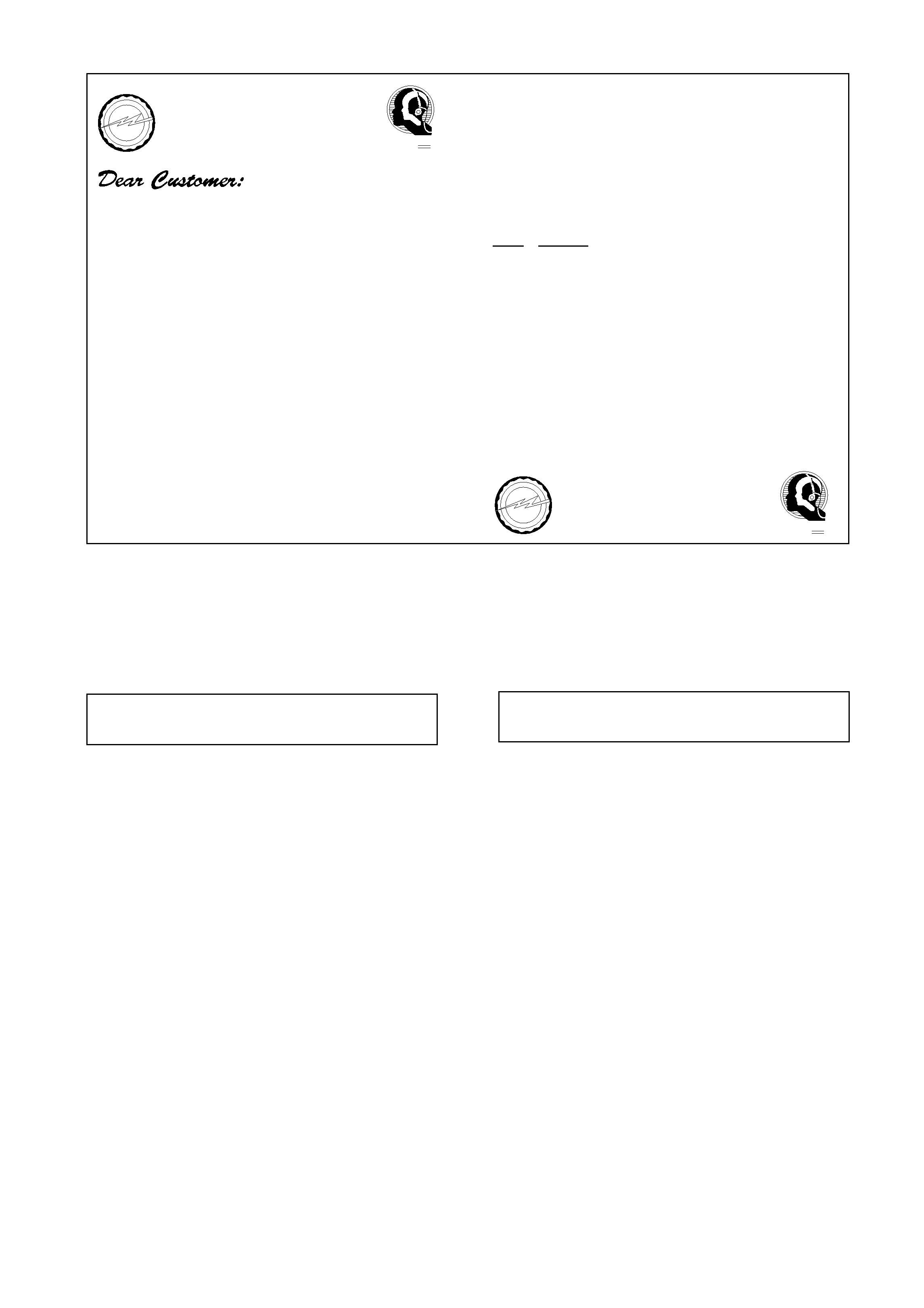
4
INSTALLATION ........................................................ 4
MAINTENANCE ....................................................... 5
HANDLING CASSETTE TAPES ............................... 6
CONNECTIONS ....................................................... 7
FRONT PANEL FACILITIES ..................................... 8
PLAYBACK ............................................................. 11
SINGLE PLAYBACK ......................................... 11
BLANK SKIP ..................................................... 11
RELAY PLAYBACK .......................................... 12
MUSIC SEARCH .............................................. 13
RECORDING ........................................................... 14
RECORDING ..................................................... 14
RECORDING MUTE ......................................... 14
ERASING A TAPE ............................................ 14
TAPE COPYING ..................................................... 15
TROUBLESHOOTlNG ............................................ 16
SPECIFICATIONS ..................................... Back cover
CONTENTS
INSTALLATION
When installing the deck, avoid locations with high
temperatures or humidity, and make sure that
the deck receives adequate ventilation.
7 Do not install the deck in locations subject to di-
rect sunlight, or near a space heater or other heat-
ing device, as this may cause damage to the fin-
ish or internal parts.
7 Malfunctions may also result if the deck is in-
stalled in an excessively humid or dusty location.
Avoid installing the deck next to kitchen counters
or other locations subject to oily smoke or humid-
ity.
7 If the deck is placed directly on top of an amplifier,
it may pick up humming or other noise. Also, if
the amplifier generates a large amount of heat,
the deck may malfunction.
7 If the deck is located near a television set, it may
pick up inter ference noise, which will be recorded
as a whistling sound on the tape. If this happens,
move the deck further away from the television
set or turn the television set off when operating
the deck.
7 Do not place a cloth over the deck, or block the
ventilation slots in any way. The ventilation slots
on this deck are necessary to keep internal parts
cool. If they are blocked, the deck may malfunc-
tion.
Selecting fine audio equipment such as the unit you've just
purchased is only the start of your musical enjoyment. Now it's time
to consider how you can maximize the fun and excitement your
equipment offers. This manufacturer and the Electronic Industries
Association's Consumer Electronics Group want you to get the
most out of your equipment by playing it at a safe level. One that
lets the sound come through loud and clear without annoying
blaring or distortion--and, most importantly, without affecting your
sensitive hearing.
Sound can be deceiving. Over time your hearing "comfort level"
adapts to higher volumes of sound. So what sounds "normal" can
actually be loud and harmful to your hearing. Guard against this by
setting your equipment at a safe level BEFORE your hearing adapts.
To establish a safe level:
÷ Start your volume control at a low setting.
÷ Slowly increase the sound until you can hear it
comfortably and clearly, and without distortion.
Once you have established a comfortable sound level:
÷ Set the dial and leave it there.
Taking a minute to do this now will help to prevent hearing damage
or loss in the future. After all, we want you listening for a lifetime.
We
Want You
LISTENING
For A Lifetime
We Want You Listening For A Lifetime
Used wisely, your new sound equipment will provide a
lifetime of fun and enjoyment. Since hearing damage from loud
noise is often undetectable until it is too late, this manufacturer
and the Electronic Industries Association's Consumer Electronics
Group recommend you avoid prolonged exposure to excessive
noise. This list of sound levels is included for your protection.
Decibel
Level
Example
30
Quiet library, soft whispers
40
Living room, refrigerator, bedroom away from traffic
50
Light traffic, normal conversation, quiet office
60
Air conditioner at 20 feet, sewing machine
70
Vacuum cleaner, hair dryer, noisy restaurant
80
Average city traffic, garbage disposals, alarm clock
at two feet.
THE FOLLOWING NOISES CAN BE DANGEROUS
UNDER CONSTANT EXPOSURE
90
Subway, motorcycle, truck traffic, lawn mower
100
Garbage truck, chain saw, pneumatic drill
120
Rock band concert in front of speakers, thunderclap
140
Gunshot blast, jet plane
180
Rocket launching pad
Information courtesy of the Deafness Research Foundation.
We
Want You
LISTENING
For A Lifetime
EST 1924
EIA
E
L
E
C
T
R
O
N I
C
I ND
U
S
T
R
IE
S
·
A
S
S O
C I A T
I O
N
·
EST 1924
EIA
E
L
E
C
T
R
O
N I
C
I ND
U
S
T
R
IE
S
·
A
S
S O
C I A T
I O
N
·
POWER-CORD CAUTION
Handle the power cord by the plug. Do not pull out the plug by tugging the cord and never touch the power cord
when your hands are wet a this could cause a short circuit or electric shock. Do not place the unit, a piece of furni-
ture, etc., on the power cord, or pinch the cord. Never make a knot in the cord or tie it with other cords. The power
cords should be routed in such a way that they are not likely to be stepped on. A damaged power cord can cause
a fire or give you an electrical shock. Check the power cord once in a while. When you find it damaged, ask your
nearest PIONEER authrized service center or your dealer for a replacement.
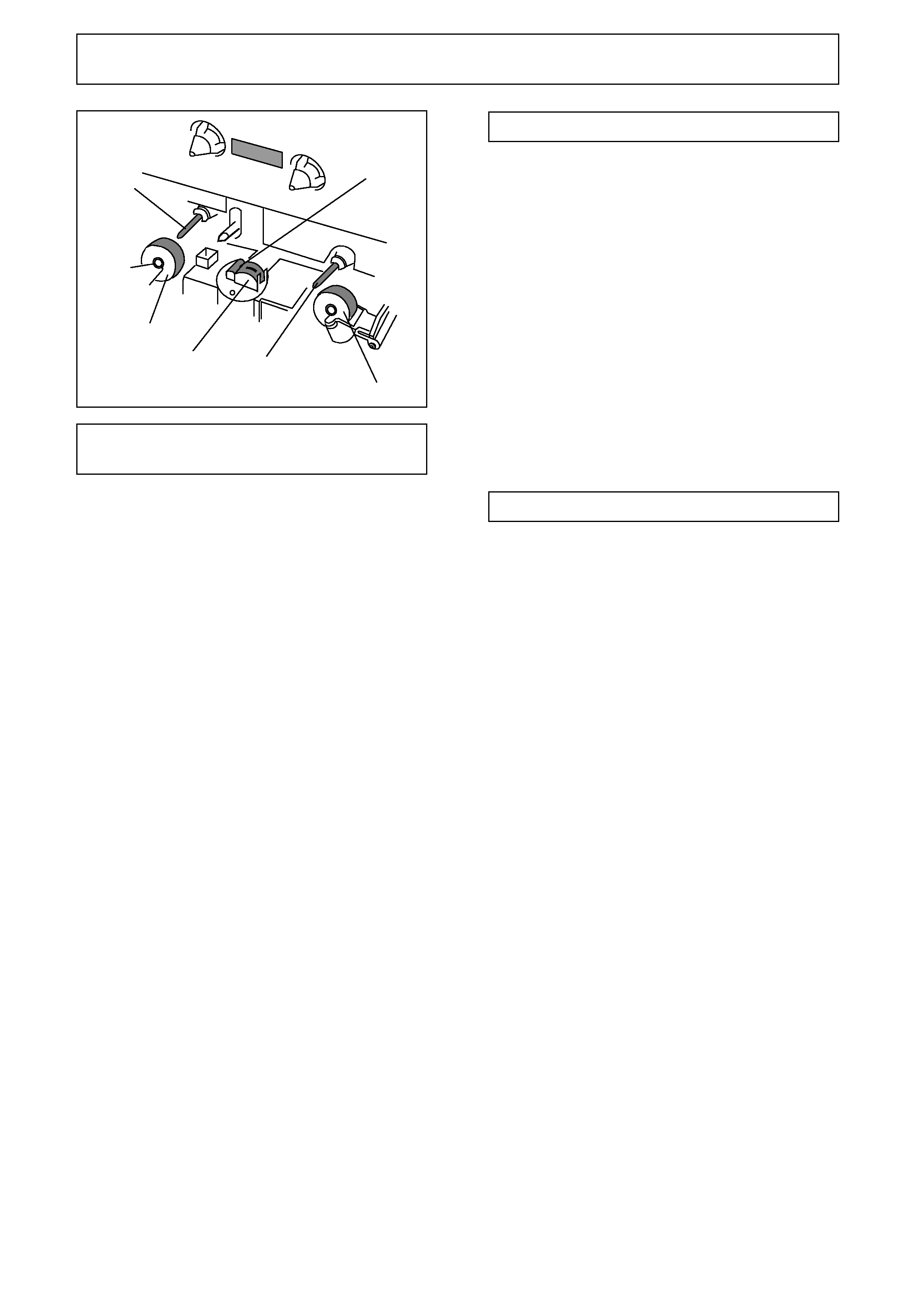
5
CLEANING THE HEADS, PINCH
ROLLERS AND CAPSTANS
The heads, pinch rollers and capstans are likely to
get dirty quite easily. If these parts, particularly the
heads, get dirty, the high frequency components of
a recording will not be reproduced and the stereo
balance will be impaired, resulting in a deterioration
of the playback sound. It is therefore recommended
that the head section be cleaned regularly.
1. Set the POWER switch to OFF.
2. Press the eject button to open the cassette door.
3. Dip a cleaning swab in cleaning fluid and use it to
wipe the heads, capstans and pinch rollers.
NOTE:
After cleaning the head section, do not load a tape until
the cleaning fluid has dried completely (about two or
three minutes).
MAINTENANCE
Capstan
CLEANING THE FRONT PANEL
Clean the deck regularly with a soft cloth. If the front
panel becomes soiled, moisten a soft cloth with a
weak solution of neutral detergent (diluted in five to
six parts water), wring the cloth well, and wipe the
panel clean. Never use volatile cleaners like thinners,
benzine or alcohol because they will damage the
panel finish.
DEMAGNETIZING THE HEADS
After using the cassette deck for a period of time, the
heads will become magnetized. The same effect will
occur if a magnetized screwdriver, magnet or other
magnetized object is brought too
close to the
heads. When the heads become magnetized, high-
frequency sounds will be lost during recording or
playback, and interference noise may also occur. The
heads should be regularly demagnetized with a head
demagnetizer, which can be purchased at most
audio stores.
When demagnetizing the heads, make sure that the
POWER switch of the cassette deck is set to ON.
However, be sure to turn down the amplifier's
volume control to its lower position, and disconnect
any headphones from their headphones jack. For
detailed instructions, refer to the operating
instructions of the head demagnetizer.
Erase head
Pinch roller
Capstan
Pinch roller
Rec/play head
